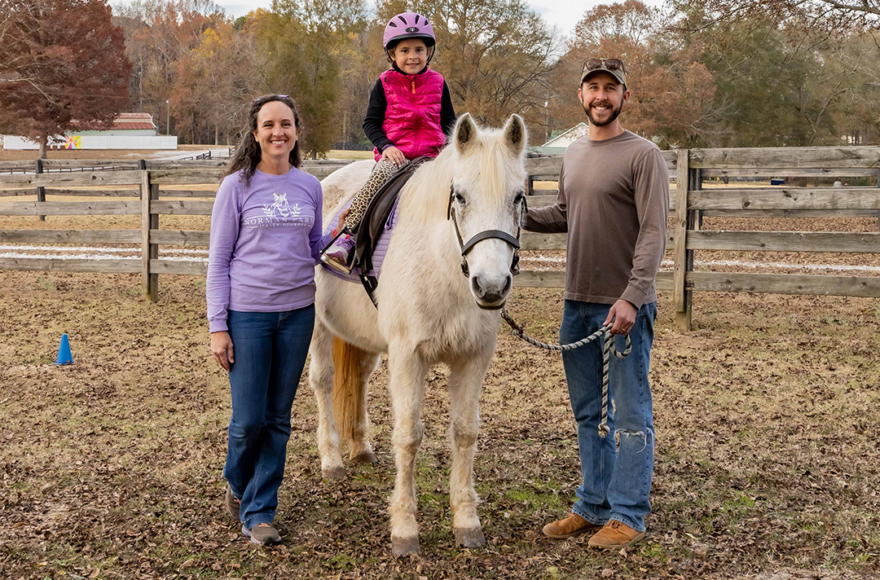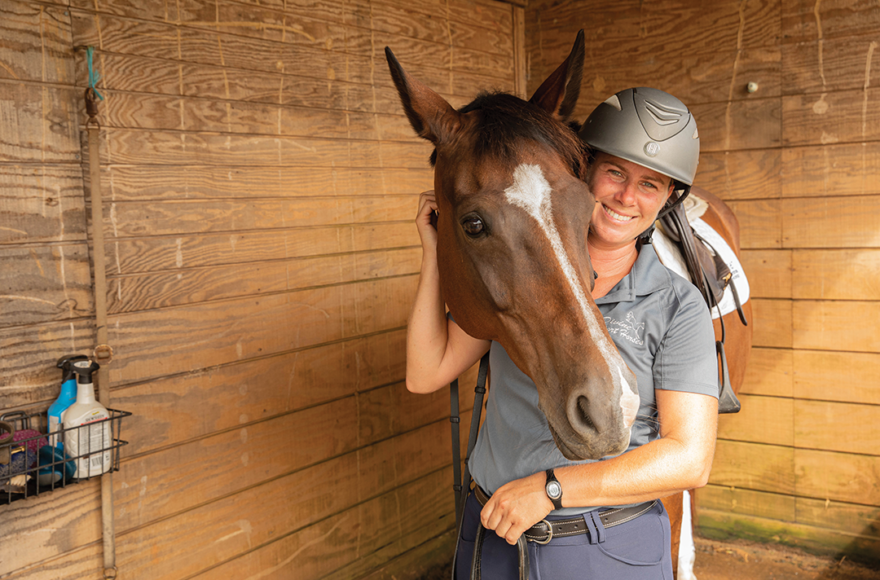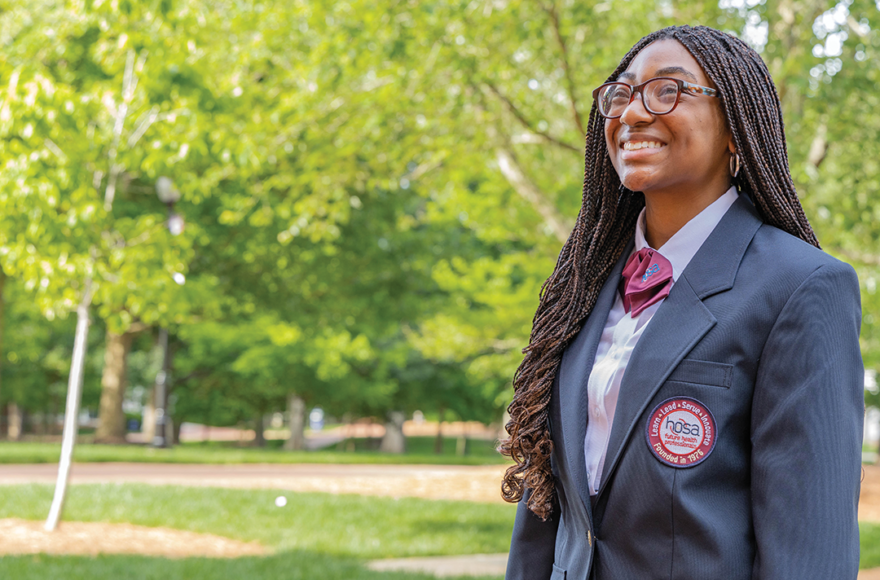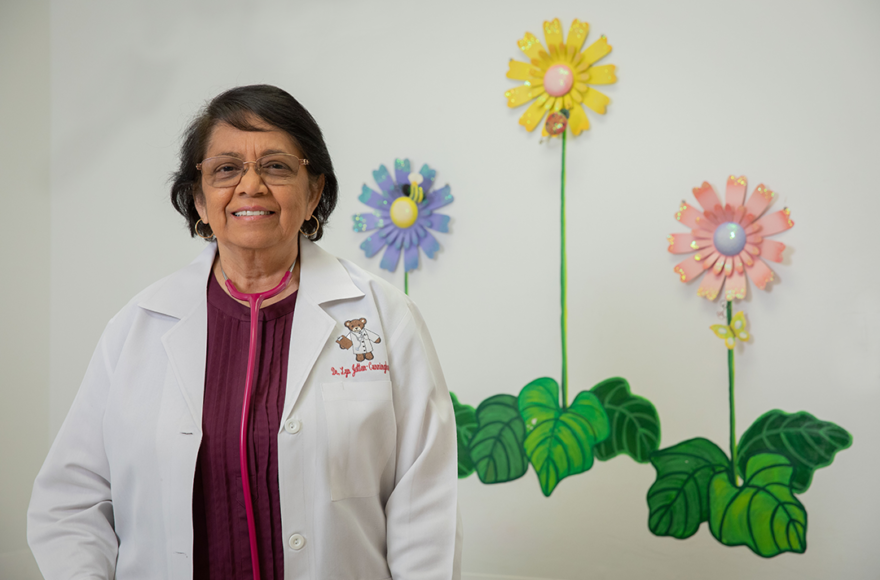Restoration happens one hoofprint at a time at Norman Farms in Jersey. There, physical therapist Lauren Norman and her small group of horses have been the key to many children with special needs finding renewed health and zest for life.
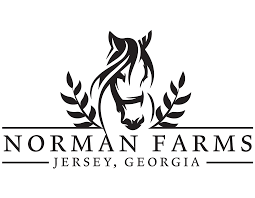
Logan and Lauren Norman had one simple prayer when they bought their sprawling acreage in 2013: “God, please allow us to bless others with our farm.” Little did they know their prayer would be answered through their daughter, Elizabeth. Diagnosed with cerebral palsy at age 1, she was the catalyst for the Normans creating a hippotherapy haven where dozens of children and young adults have found healing.
The word “hippotherapy” brings to mind large grey water- beasts from Africa, but the term refers to using horses as a tool for various physical, occupational and speech therapy processes. It comes from combining two Greek words: hippos (horse) and therapeia (curing, healing, service done to the sick). According to the American Hippotherapy Association, “… Professionals use evidence-based practice and clinical reasoning in the purposeful manipulation of equine movement as a therapy tool to engage sensory, neuromotor and cognitive systems to promote functional outcomes.” Hippotherapy is used as one part of an overall plan of care provided by professional therapists.
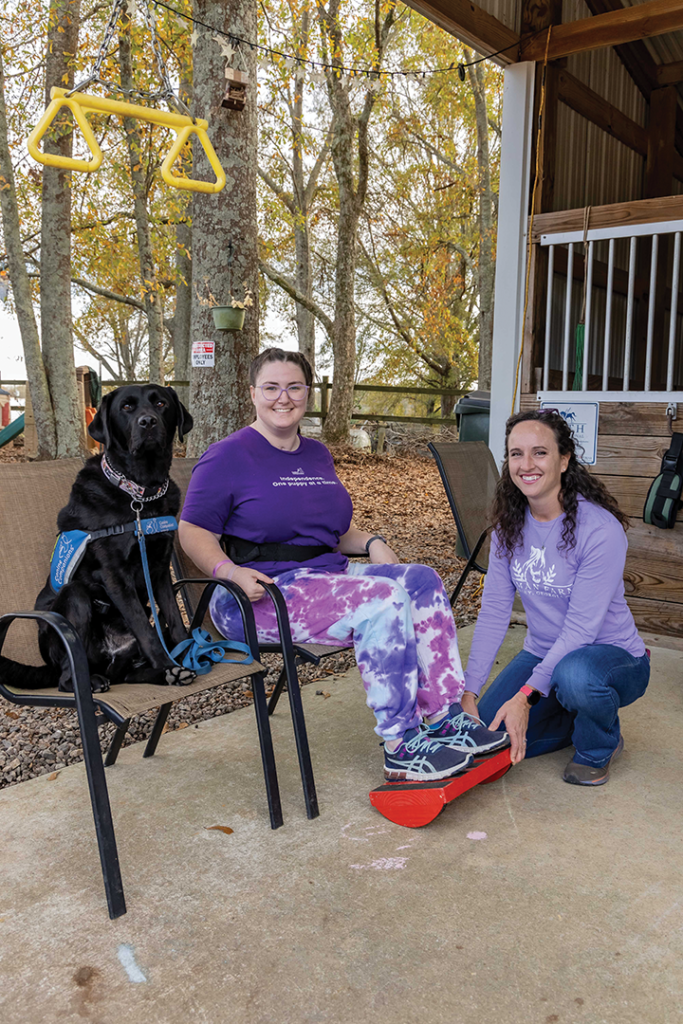
Norman has loved horses her entire life. “I started riding at age 7,” she said. “I had two horses while I was growing up—one of them that I got when I was 10 is still out there on the farm. I went to the University of Georgia for undergrad and did athletic training, sports medicine and ortho. Then I went on to the University of Alabama in Birmingham to their physical therapy school.” Norman knew she did not want to work in pediatrics, so she concentrated on orthopedic therapy during the early years of her career.
After Elizabeth was diagnosed with cerebral palsy, the toddler used a walker to get around. “I just started putting her on our horses,” said Norman, eager to help her child. Her friend and fellow physical therapist, Lynda Reagan, encouraged her to do so. “There wasn’t much access to hippotherapy in this area, or even pediatric physical therapy then,” she added. Norman began learning all she could about the process.
“A horse’s pelvic motion mimics our gait pattern, so riding gives our body biofeedback on what a normal walking pattern feels like.”
Lauren Norman
The AHA states that horses provide a unique form of neuromotor stimulation. Because the average horse takes approximately 100 steps a minute, a five-minute ride on a walking horse provides 500 neuromotor inputs to the rider’s body. These stimulate key neuromotor systems that support body functions. Therefore, equine movement can result in complex motor learning.
“A horse’s pelvic motion mimics our gait pattern, so riding gives our body biofeedback on what a normal walking pattern feels like,” Norman said. “Gait pattern is a big deal. While you’re on a horse, you’re getting pelvic motion side-to-side and front-to-back and rotation that helps your trunk stabilize. Arms and legs can only function well off a stable base. You have to have a stable trunk to reach overhead, hold a gallon of milk or lift things from the ground.”
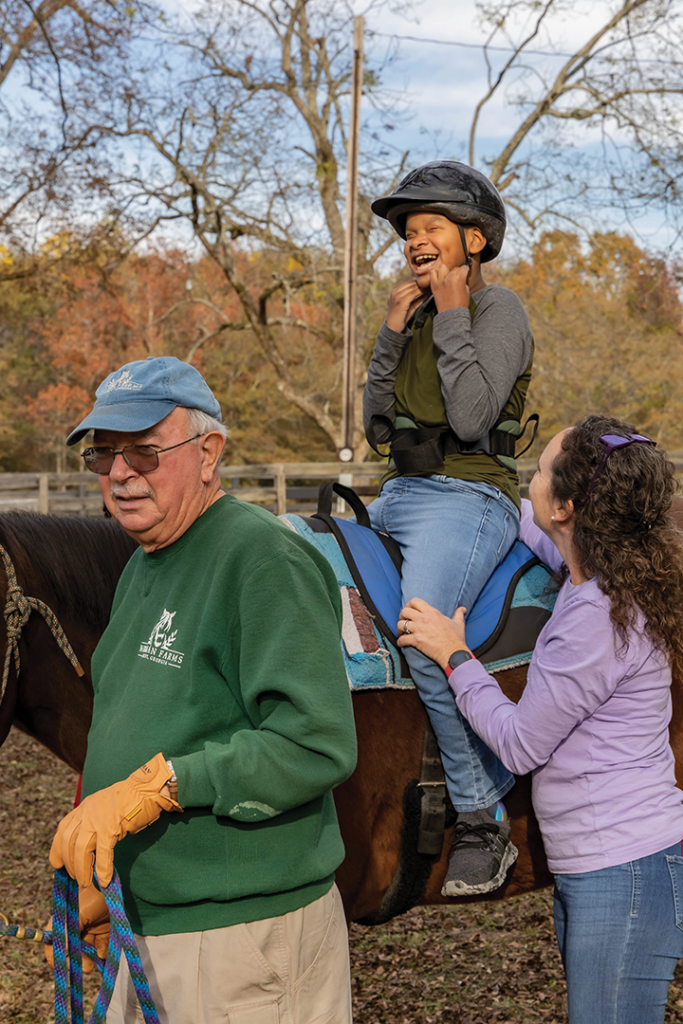
Norman believes that learning the feeling of a normal walking pattern represented a major step forward for Elizabeth. “She zoomed from using a walker to using nothing,” she said. “In fact, her first steps without the walker happened in the pasture, walking towards a horse.” Hippotherapy can be highly beneficial to patients who use a wheelchair. “Being in a wheelchair means being pushed through life, in a sense,” Norman said. “It’s kind of like watching a rollercoaster on TV instead of actually riding it. Being on a horse provides the motions—the vestibular input and visual flow—that show the patient what walking through life actually feels like.”
Vestibular or ear-related balance issues are common in vision-impaired people. Norman currently has two patients who are completely blind.
“Your vision and vestibular systems work together to help you balance,” she said. “Hippotherapy provides sensory input that helps fill the gaps the vestibular system needs to understand where the body is in space. This results in stronger balance, which helps decrease the risk of falls and injuries.”
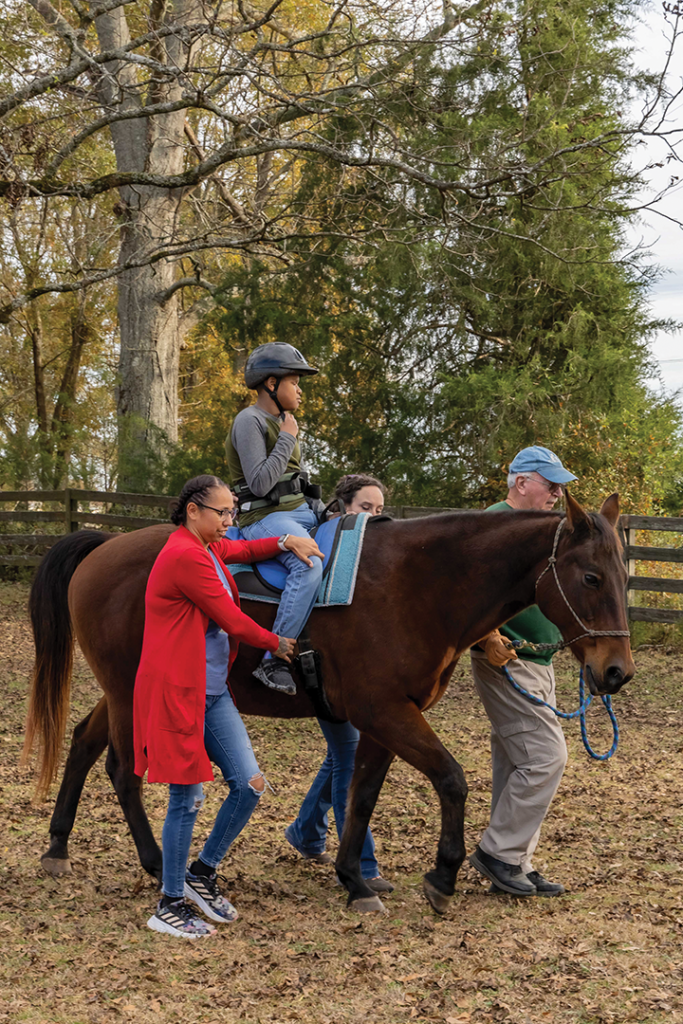
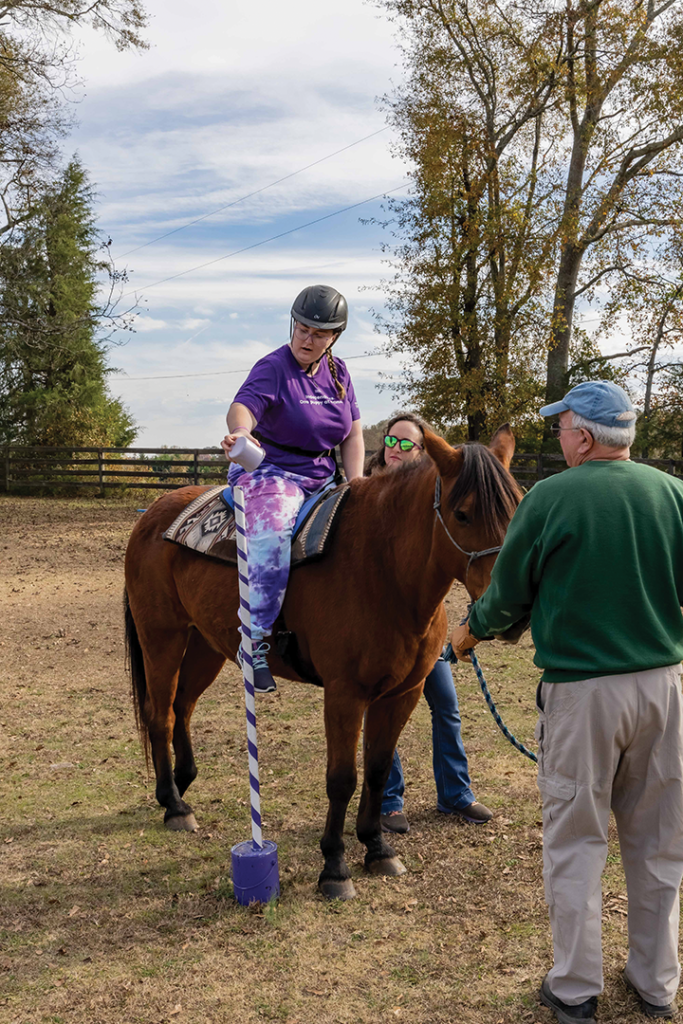
Norman has helped patients with various health conditions, including traumatic brain injuries, autism and Down syndrome. One current patient is in renal failure; hippotherapy helps him build his endurance. She carries a full load of 20 patients at all times, as does the farm’s other physical therapist, Carley Eshleman. The third member of their team, Brynn DeLong, provides horsemanship and riding lessons for siblings and others who want to ride but do not have special treatment needs. Norman and Eshleman match their patients with the farm’s therapy horses based on their size and physical needs.
“When a kid presents with low muscle tone, we want a horse with a really big walk to wake up their muscles,” Norman said. “If we have a child with impulsive issues who tries to wiggle off the horse, we pick a low and slow horse. Our Arabians are spunky and turn quickly; some of our kids love them. They’re also narrower and more comfortable for smaller kids to ride.”
The farm also has a miniature horse that measures only three feet tall. He provides an option for young children who are intimidated by the larger animals. Norman encourages the kids to brush him or lead him around to overcome their fears.
Norman would one day like to grow their business to offer occupational and speech hippotherapy services, which are different from their current physical therapy services. “I’d also like to provide more therapeutic riding,” she said, “but we just don’t have the bandwidth now with three young kids.” The family is also in the process of adopting two children from Columbia. Norman finds it amusing that her life has turned out much differently than she had planned.
“I never imagined all of this. I didn’t want to own my own business or do hippotherapy,” she said with a smile. Now, she describes it all as a huge blessing. “It’s so fulfilling to have all of these families on our farm every day.”
To learn more about Norman Farms, visit them online at www.normanfarmsllc.com.
Click here to read more stories by Kari Apted.

